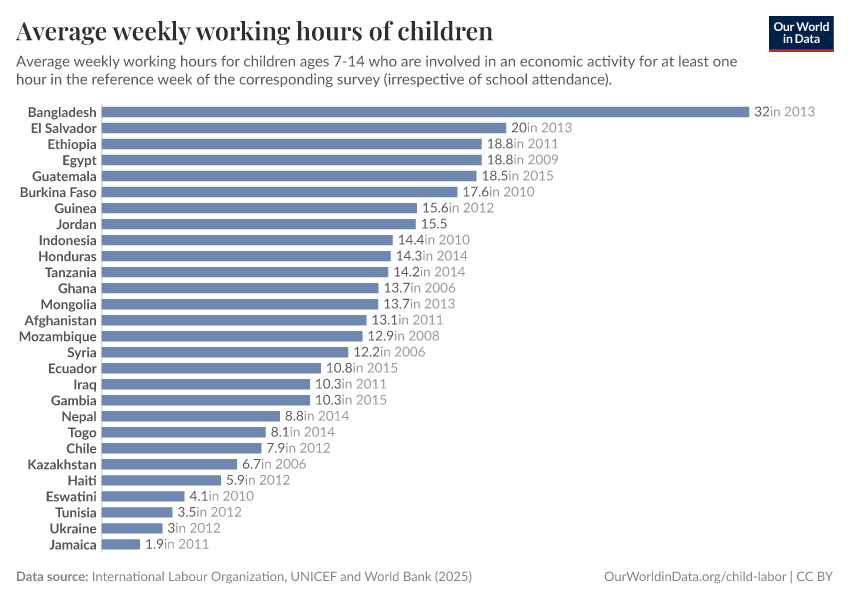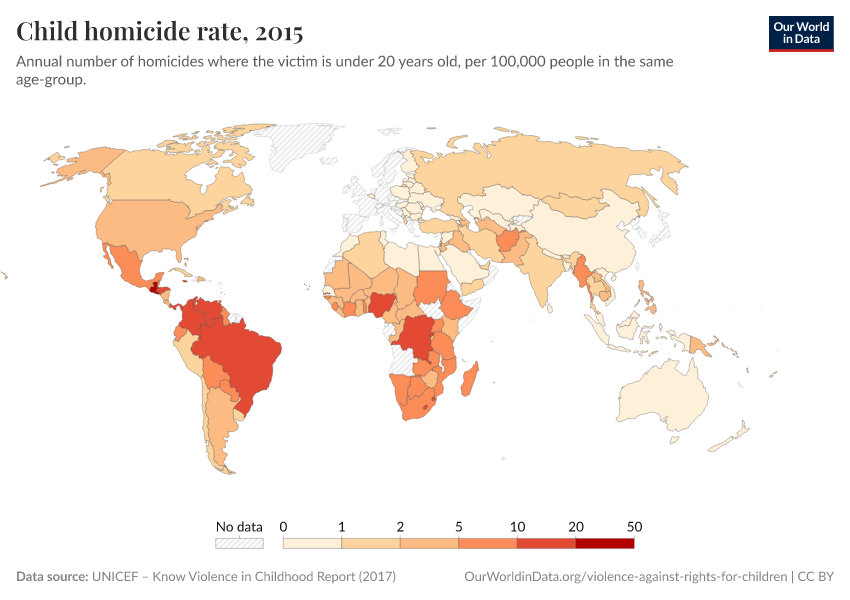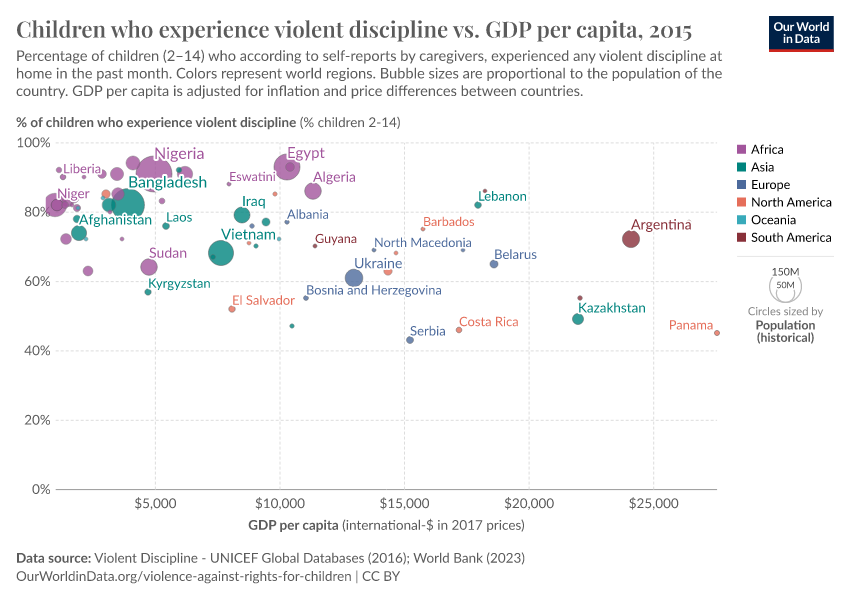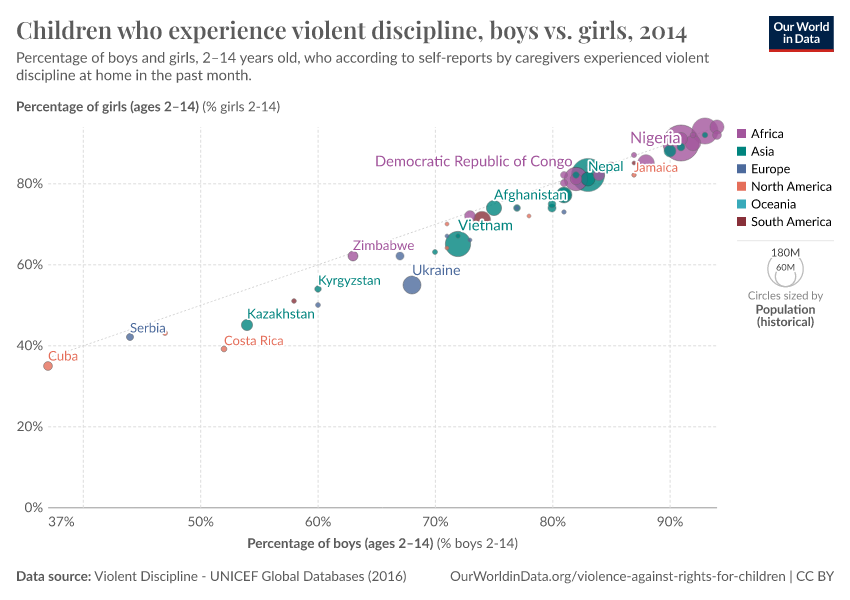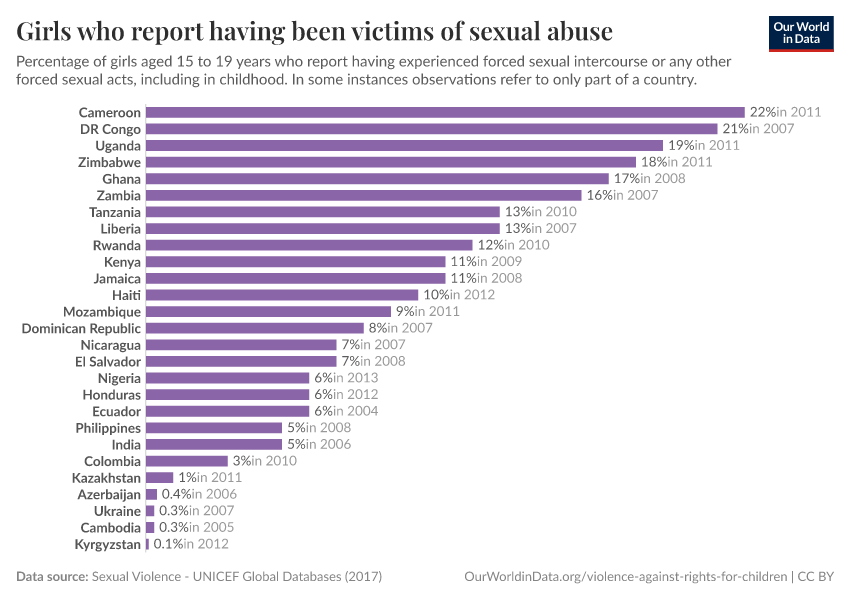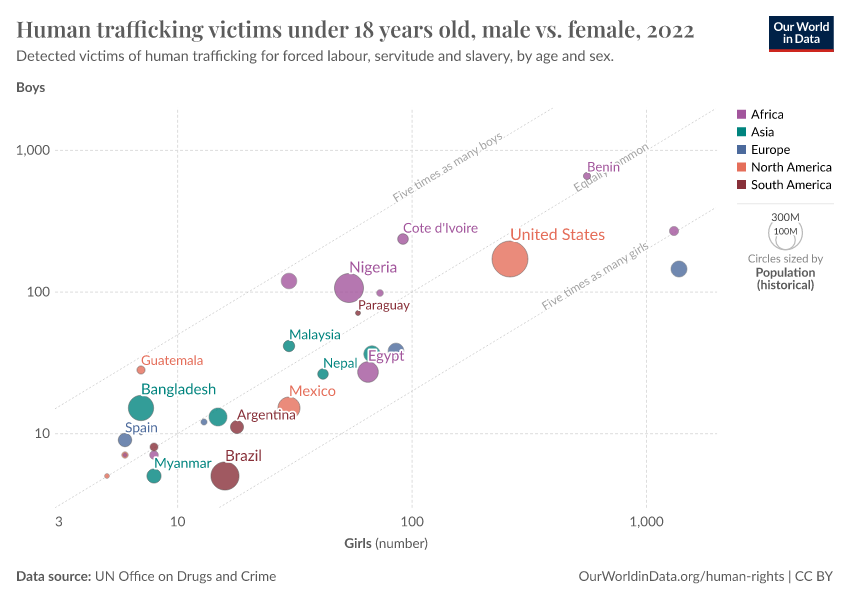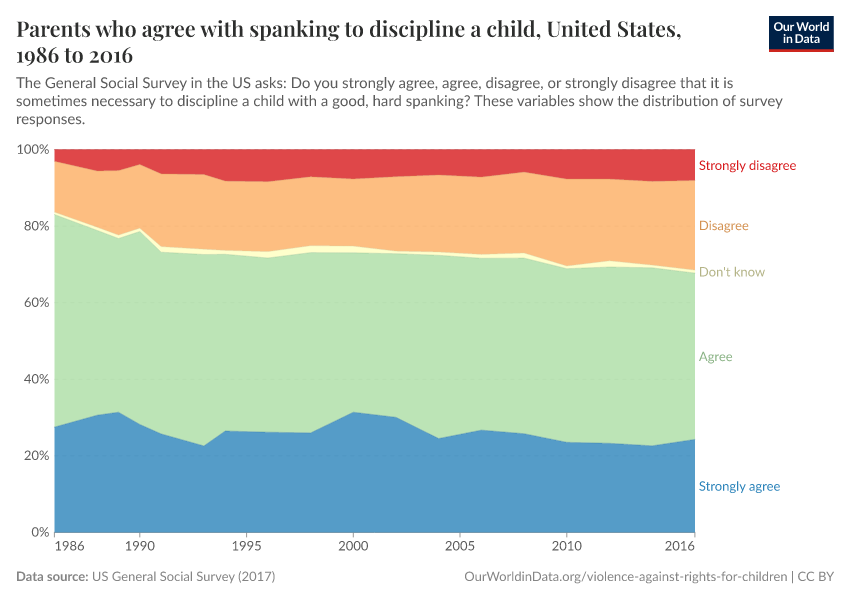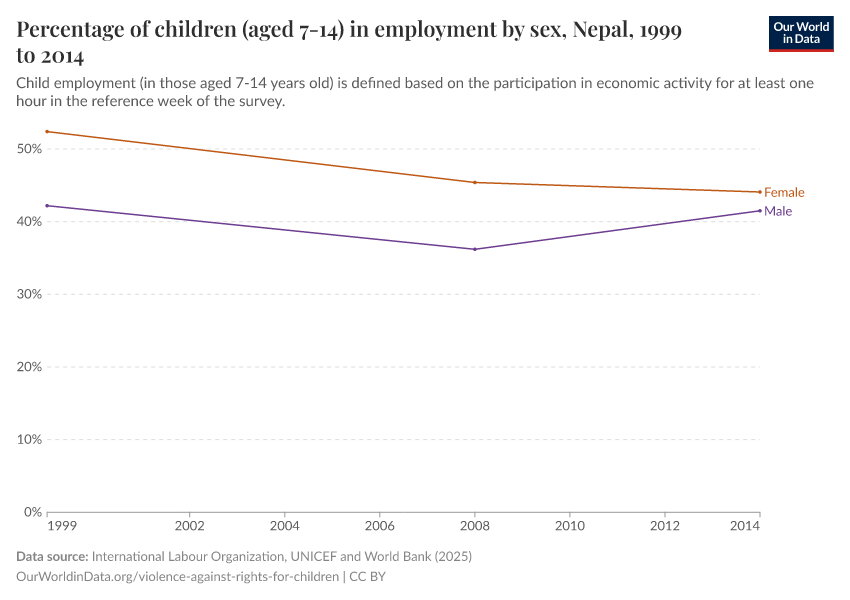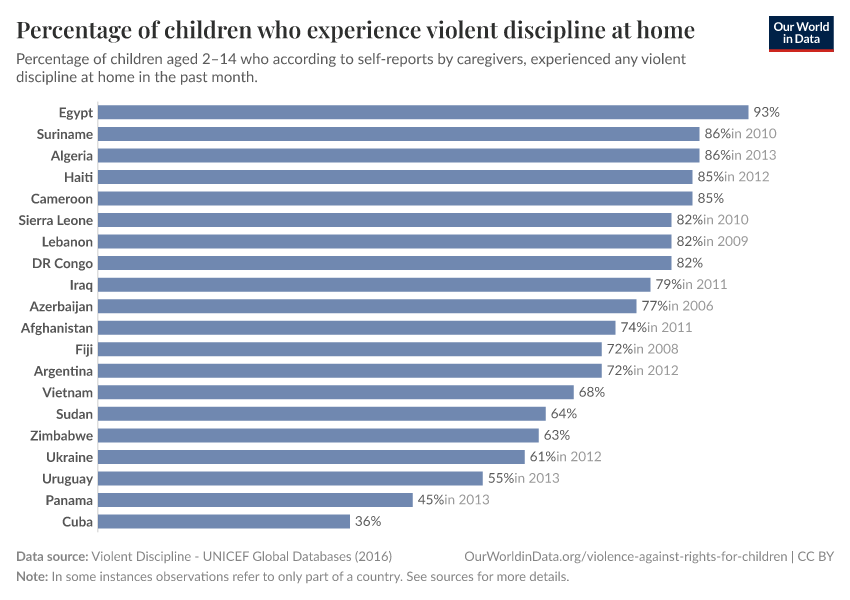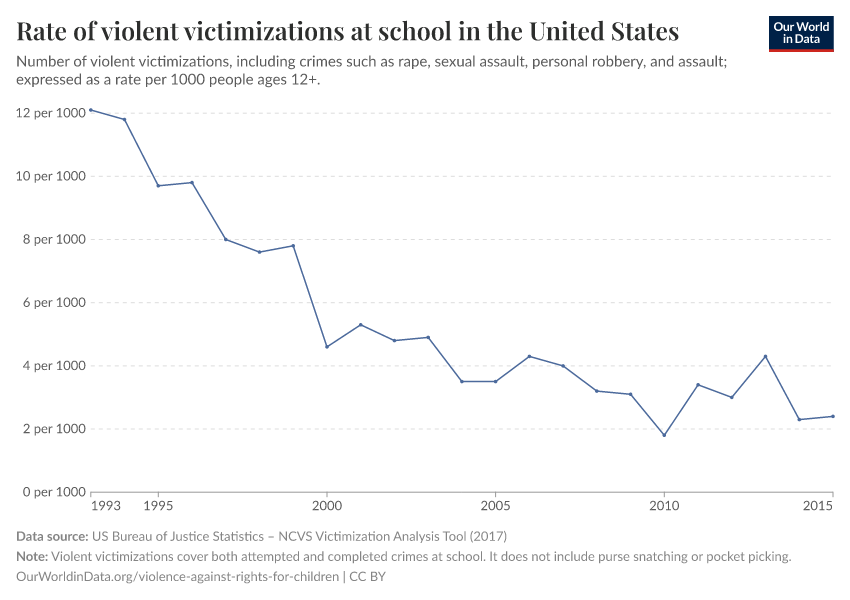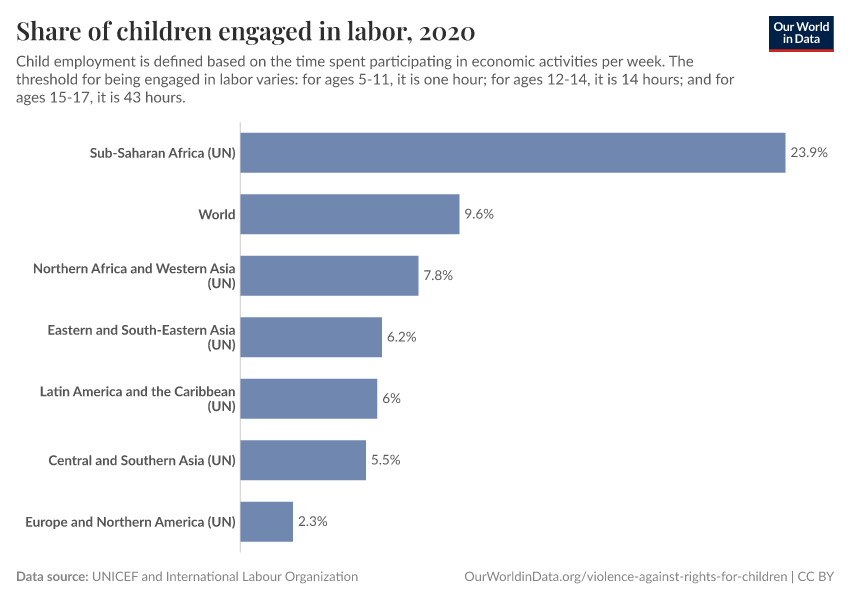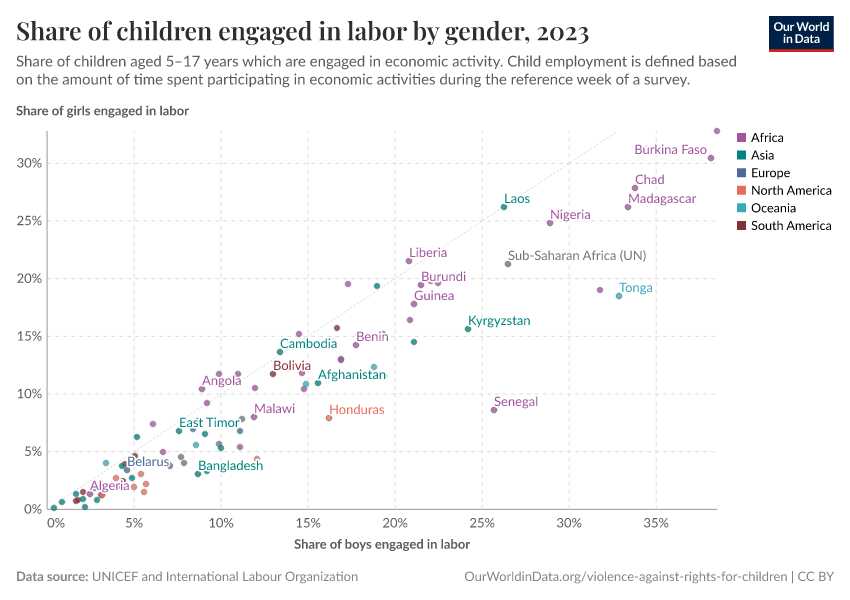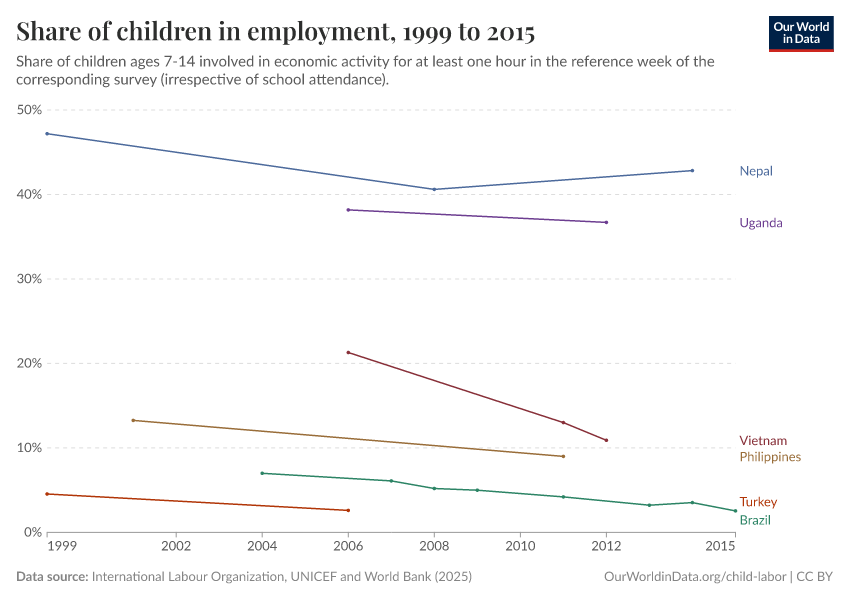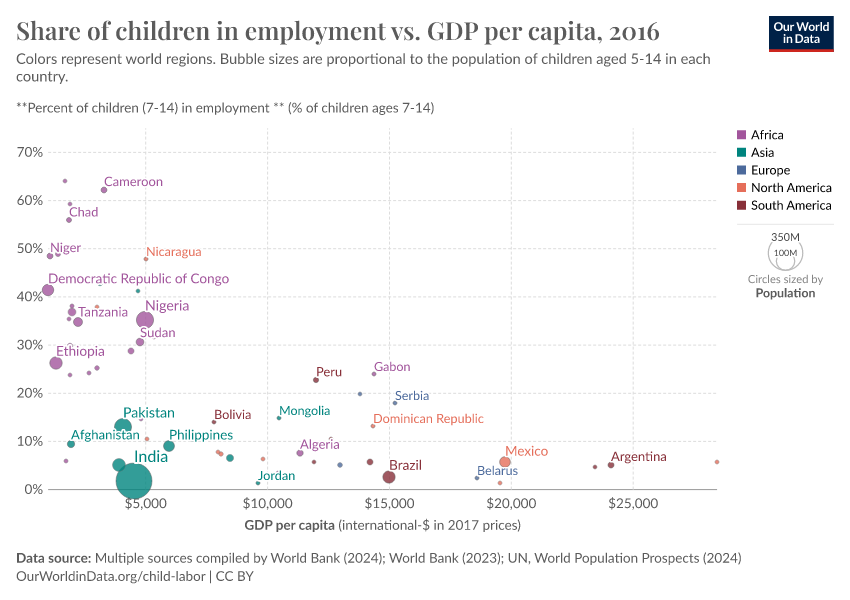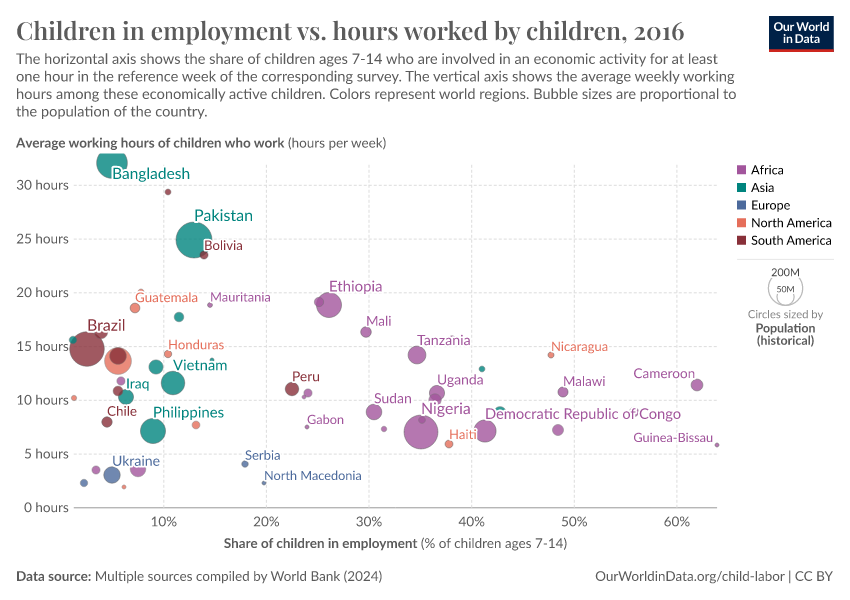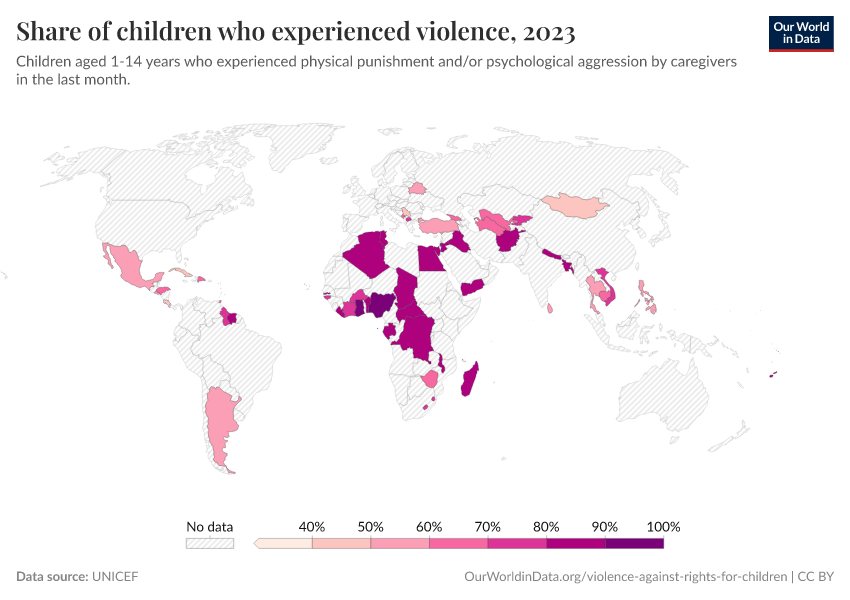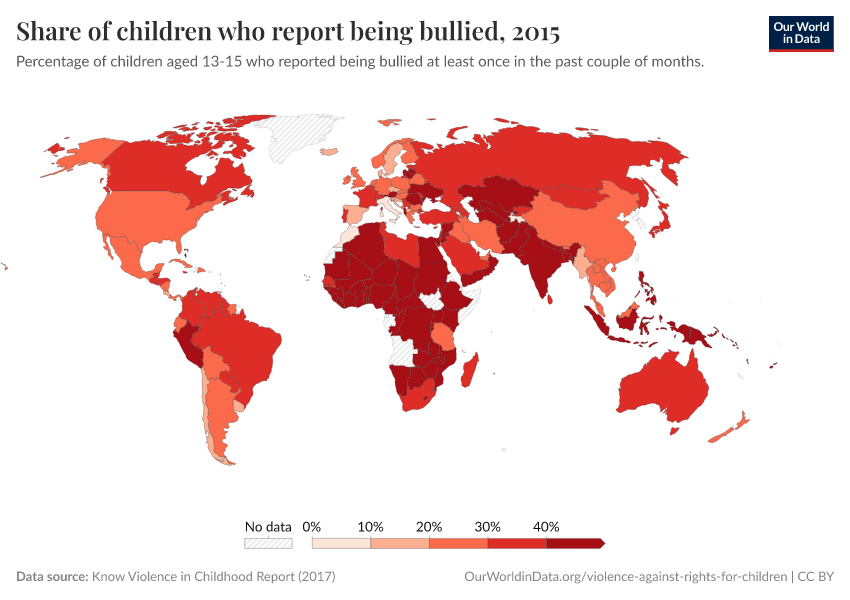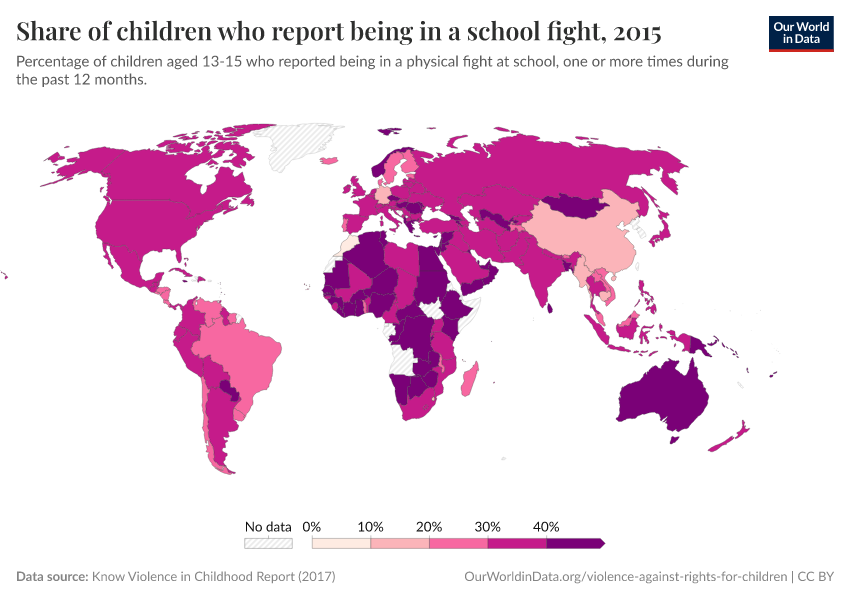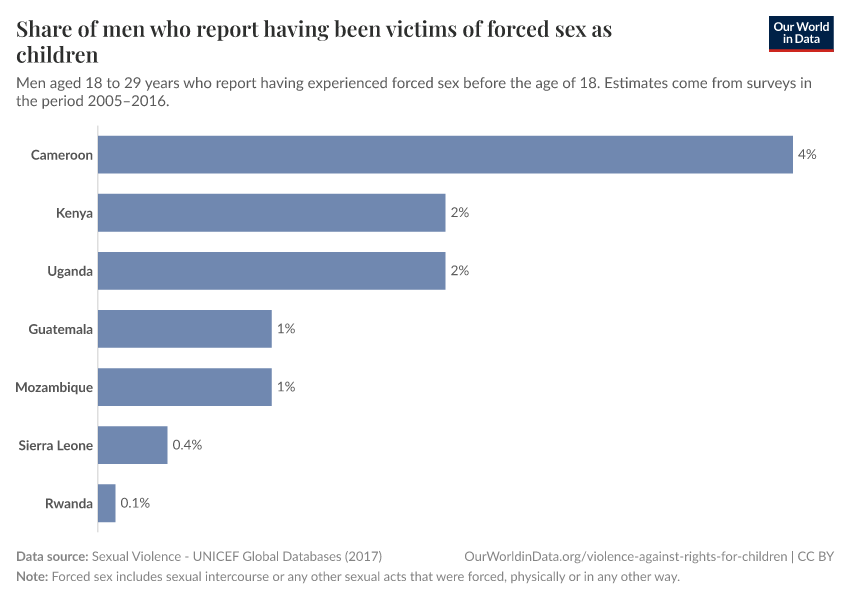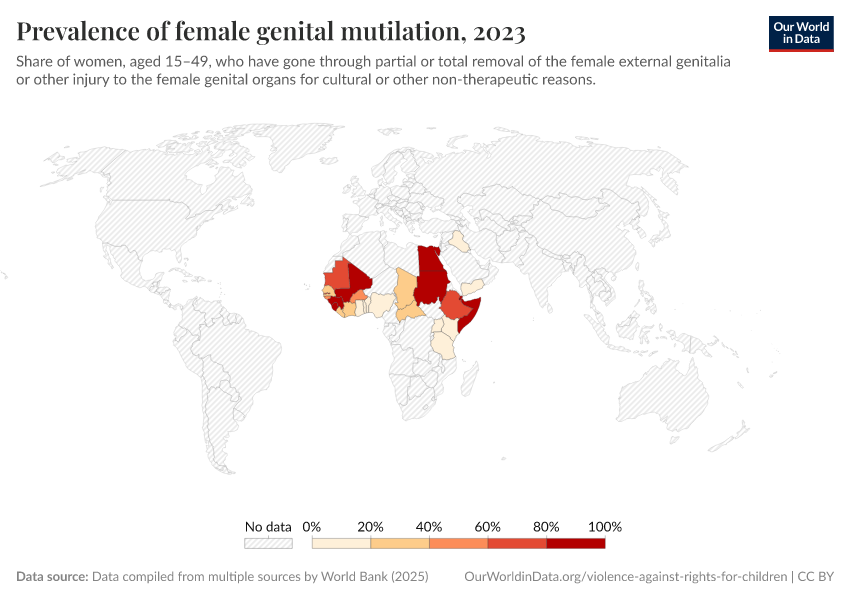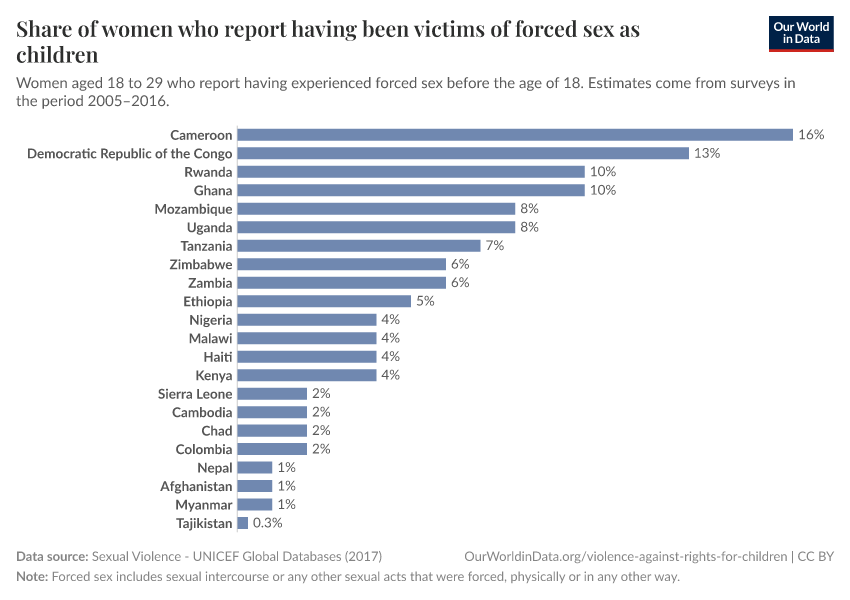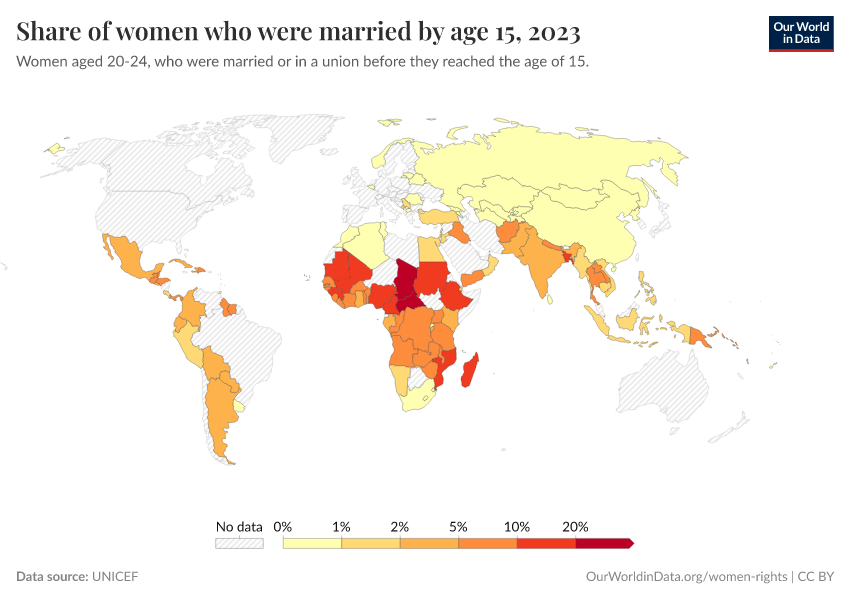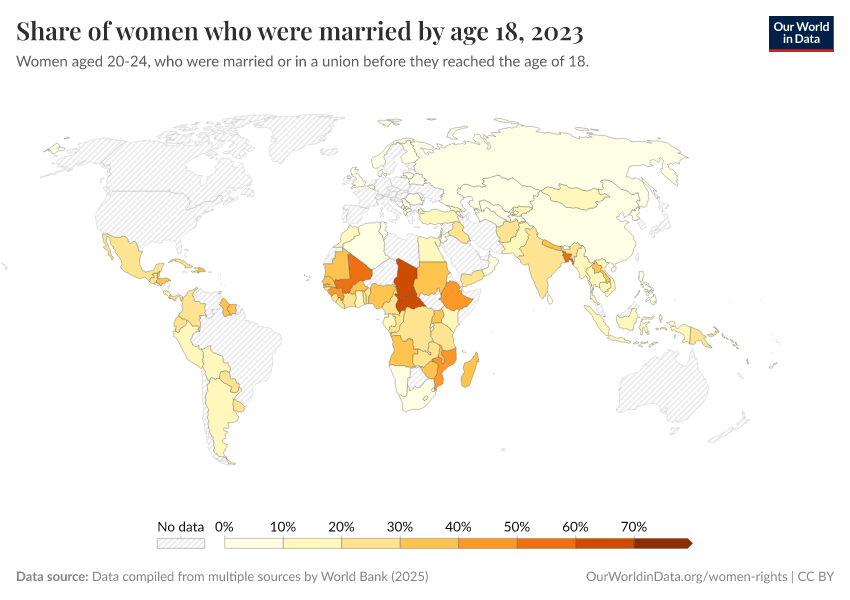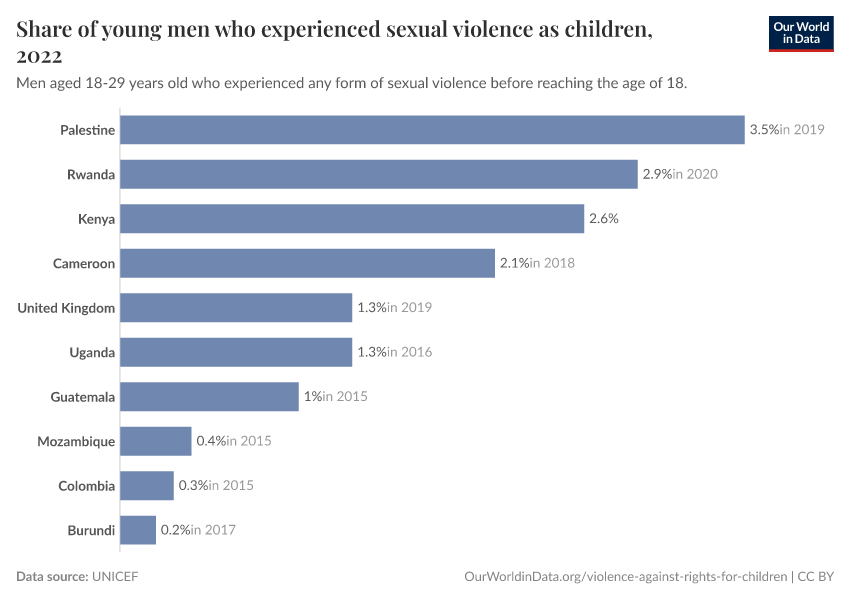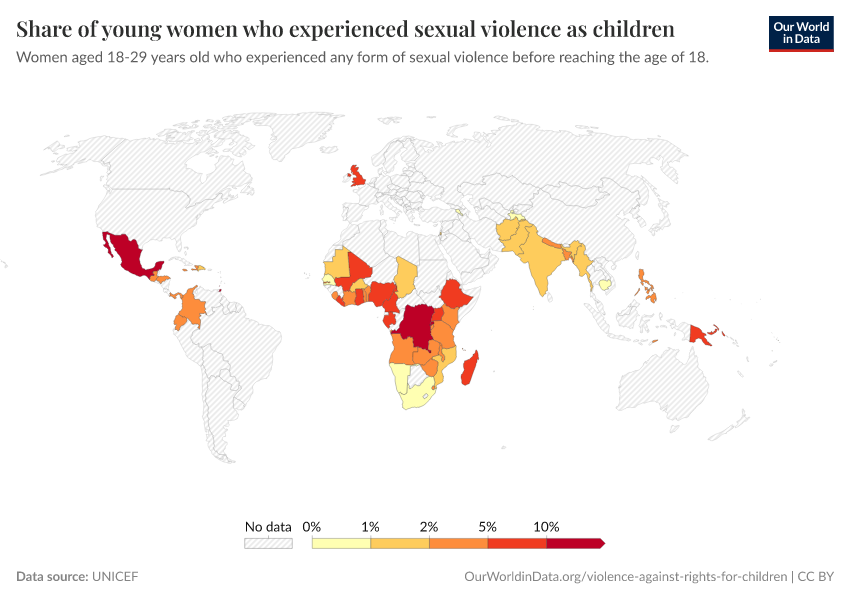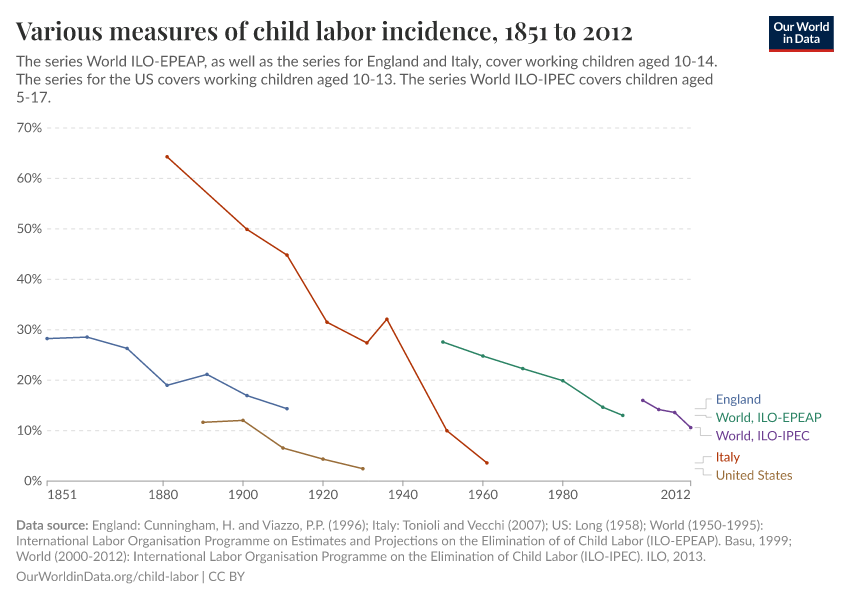Violence Against Children and Children’s Rights
Children are entitled to the same fundamental rights as adults, but because of their age, they require special protection and care.
Key rights of children include the right to a safe environment, the right to education, the right to play, and to be heard in decisions that affect them.
Protecting these rights is crucial for children to have fulfilling childhoods and continue to thrive as adults.
Unfortunately, violations of these rights are common and often accepted. Many children are coerced into work or early marriage, or suffer emotional, physical, or sexual abuse.
On this page, you can find data and visualizations on how the protection of children’s rights differs across countries and how common violence against children is.
Key Charts on Violence Against Children & Children's Rights
See all charts on this topicCite this work
Our articles and data visualizations rely on work from many different people and organizations. When citing this topic page, please also cite the underlying data sources. This topic page can be cited as:
Esteban Ortiz-Ospina and Max Roser (2017) - “Violence Against Children and Children’s Rights” Published online at OurWorldinData.org. Retrieved from: 'https://ourworldindata.org/violence-against-rights-for-children' [Online Resource]BibTeX citation
@article{owid-violence-against-rights-for-children,
author = {Esteban Ortiz-Ospina and Max Roser},
title = {Violence Against Children and Children’s Rights},
journal = {Our World in Data},
year = {2017},
note = {https://ourworldindata.org/violence-against-rights-for-children}
}Reuse this work freely
All visualizations, data, and code produced by Our World in Data are completely open access under the Creative Commons BY license. You have the permission to use, distribute, and reproduce these in any medium, provided the source and authors are credited.
The data produced by third parties and made available by Our World in Data is subject to the license terms from the original third-party authors. We will always indicate the original source of the data in our documentation, so you should always check the license of any such third-party data before use and redistribution.
All of our charts can be embedded in any site.
